Regular Vs. New York Style Cheesecake: Everything You Need To Know
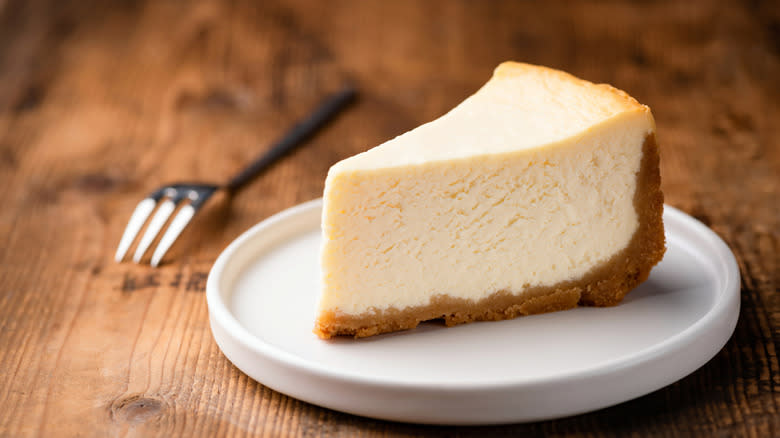
Cheesecake is the consummate dessert. Rich and sweet, it provides a silky, custardy texture for those who like ice cream and puddings, as well as enough crunch in the crust to satisfy cookie lovers, and the kind of dense filling to make pie and tart enthusiasts swoon. While it might not technically be a cake, its name is an olive branch to those who favor bready concoctions for dessert. Cheesecake has a broad appeal, but have you ever wondered about its precise definition? And what is the difference between regular cheesecake and New York-style cheesecake, anyway? Are they just two ways of describing the same thing?
Broadly speaking, a cheesecake is a dense, creamy dessert made with some proportion of soft cheese and sugar. Many recipes have a biscuit-based crust and call for a fruit topping. Rather than being a cake, cheesecake is more in keeping with pies and tarts, though they are often made in deeper dishes with flat, vertical sides rather than fluted sides like tarts or slanted sides like pies. Aside from these characteristics, regular cheesecake and New York-style cheesecake vary in many ways, including their ingredients, history, texture, and variability. So, before you settle on a recipe to try at home or select a slice from a menu, here is the rundown.
Read more: 12 Popular Ice Cream Brands, Ranked Worst To Best
Regular Cheesecake Dates Back To Ancient Greece
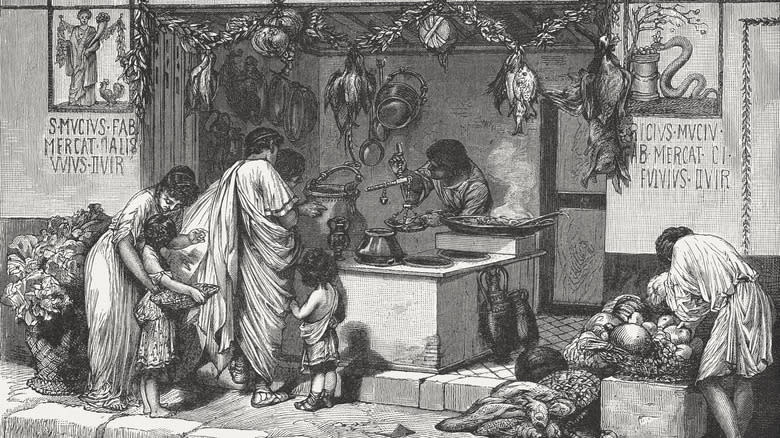
The earliest record of cheesecake dates all the way back to 776 B.C. when the Greeks served the dessert to athletes in the first Olympic Games. Their version was barely recognizable to what we know today, though the recipe sounds promising. It consisted of cheese that had been pounded until soft, mixed with honey and a little wheat flour, and heated. When Rome defeated Greece and built its empire, they too were fans of the dessert and made the ingenious addition of crust. Eventually, they brought their recipe to Great Britain, where it became a popular food in the upper echelons of Medieval society.
Over the centuries, the concept of a dessert made of soft cheese was taken up by many cultures around the world, and "regular" cheesecake means different things in different places. In America, it usually refers to a deep-dish, baked dessert made with cream cheese. In Japan, it's a light and fluffy concoction made with egg whites. In parts of Europe, it doesn't have a crust. And in other places, it refers to a dessert made with ingredients you can't find in the U.S.
New York-Style Cheesecake Is Only About A Century Old
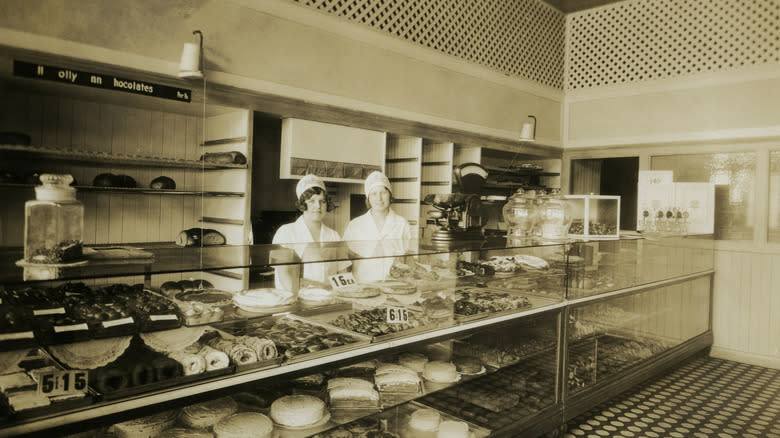
Americans were making cheesecake before the 20th century, but it wasn't until the late 1920s that New York-style cheesecake began to take the country by storm. The man most widely credited with the invention is Arnold Reuben, the namesake of the famous Reuben sandwich and owner of a midtown Manhattan establishment called Turf Restaurant. While other cooks were using cottage cheese in their cheesecakes, Reuben began using a newfangled product called cream cheese. The true originator of the idea may have been the hostess of a house party he attended, but it was Reuben (or more likely his pastry chef) who developed the recipe from a cream cheese pie to a world-renowned cheesecake.
In a cruel twist of fate, the new dessert was so popular that rival restaurant owner Leo Lindemann poached Reuben's pastry chef, and it was at Lindy's, not Turf, where the cheesecake became an institution. It even features in the musical "Guys and Dolls" as the favorite dessert of gambler Sky Masterson. Lindy was changed to Mindy, but no one who had witnessed the craze over Lindy's cheesecake could mistake the reference.
The recipe remained a closely guarded secret for years and its precise ratios may be lost forever, but over time, copycat recipes emerged and became standardized into what we now recognize as a classic New York-style cheesecake.
Regular Cheesecake Doesn't Always Have Crust
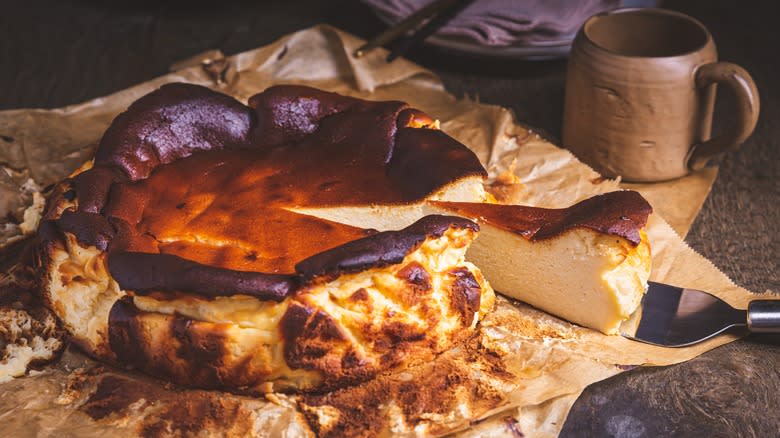
If you're used to cheesecakes with some kind of graham cracker or cookie-based crust, it's probably hard to imagine a variation without it, but some recipes are proudly crust-free. Take the version that originated in the Basque region of southwestern Europe. Known appropriately enough as Basque cheesecake, it's made with cream cheese, crème fraîche, and lots of eggs, and baked in a cake tin lined with parchment paper. When it's pulled from the oven, the parchment paper and the top of the cheesecake have turned dark brown, making it look less like a show-stopping dessert than the final creation of a soon-to-be-eliminated baking show contestant.
Despite its homely appearance, however, Basque cheesecake has bucked the trend of picture-perfect foods and enjoyed a spike in popularity in recent years simply because of how delicious it is. A high baking temperature means that the top caramelizes while the inside stays creamy, creating a mouth-watering texture that is unique to other cheesecakes. The recipe was devised in 1990 at La Viña, a restaurant in the town of San Sebastian in the Basque region. Since then, it has become a beloved dessert in places as far afield as Japan and Turkey, and was even featured in a flurry of British cookbooks in the late 2010s despite the country's long affiliation with crust-based cheesecakes.
New York-Style Cheesecake Has Graham Cracker Crust
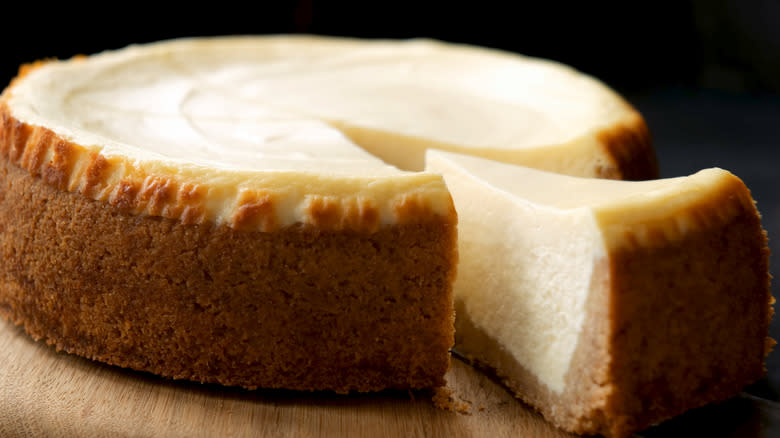
A cheesecake without a crust cannot be categorized as a New York-style cheesecake. In fact, a cheesecake with a crust made of anything other than graham crackers could not accurately be categorized as the offspring of the original Lindy's dessert. The texture of the creamy filling is one of the hallmarks, as is the slight tangy lemon flavor, but the crust is what truly sets it apart.
Reuben and his pastry chef did not invent graham cracker crust. That distinction belongs to the "Pie King," Monroe Boston Strause, who turned to the popular digestive biscuit sometime around 1928 when he was painstakingly developing a recipe for what would become chiffon pie. He found that the delicate texture of the filling clashed with a typical pastry crust, so he did what all ambitious young innovators should do — he listened to his mother. Her suggestion of graham crackers proved to be the missing piece of the chiffon pie puzzle, and made Strause a celebrity among 20th-century baking enthusiasts.
Regular Cheesecake Does Not Have To Be Baked
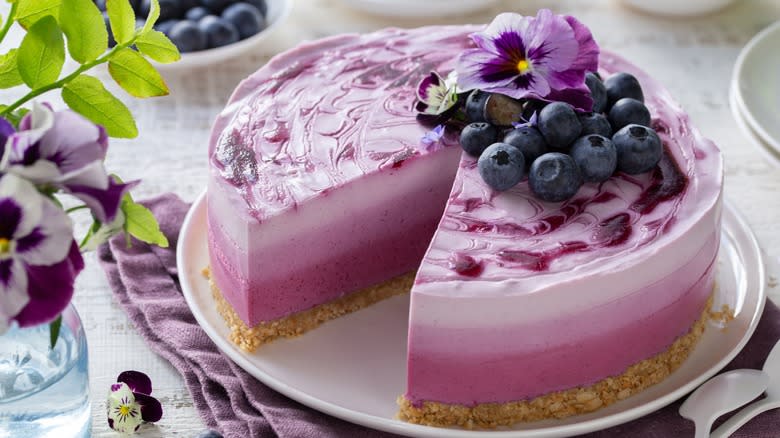
The first known documented recipe for cheesecake dates back to 230 A.D., and instructs that the mass of pounded cheese, honey, and wheat flour be heated and then cooled. This suggests that the first cheesecakes were baked. Over time, however, and with the ready availability of refrigerators, no-bake versions of the dessert have emerged as some of the most popular, especially for home cooks. Baked cheesecake has a penchant for splitting when it's in the oven, and the delicate balance of getting the eggs to cook but not turn into a stiff, sponge-like texture is difficult to strike. No-bake cheesecake does not have eggs and only requires a lengthy chilling process to set. With no risk of developing cracks, it is a safer option if you're making the dessert for a special occasion.
There are many types of regular cheesecakes that are baked, but there are fewer constraints when you opt for a no-bake version. From a bright, fresh strawberry cheesecake to a decadent, fudgy Black Forest cheesecake, recipes without baking provide flavors that you couldn't achieve if heat was involved. Baking the strawberry cheesecake would turn its summery flavor of fresh strawberries and cream into strawberry custard, while the chocolate in the Black Forest cheesecake would turn into chocolate soup. Though some regular cheesecakes require baking, there are a lot of reasons to choose a no-bake option instead.
New York-Style Cheesecake Is Always Baked
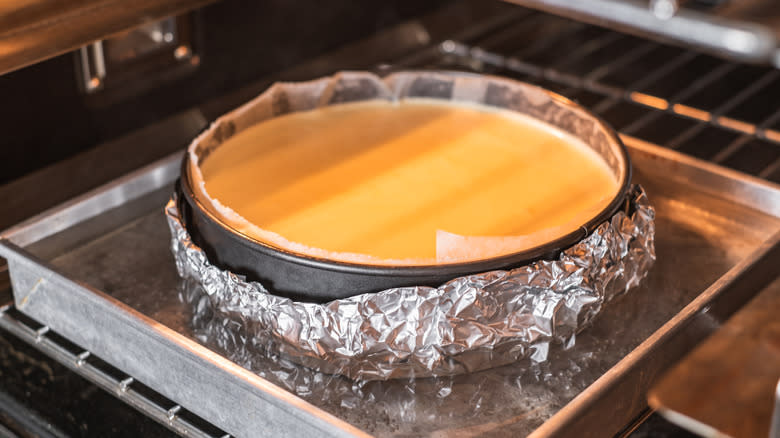
Whether or not anyone is still using the original recipe developed by Arnold Reuben and his pastry chef, New York-style cheesecake is always baked. A low temperature cooks the eggy filling without making it tough and spongy, creating a dense texture that's silky smooth. It's one of the trademarks of the famous cheesecake, but achieving it can be tricky. Over-mixing the batter traps too much air inside, which expands and can cause cracks during baking. Using a temperature that is too high can also cause cracks and make the creamy texture rubbery. If you're using a water bath to bake the dessert, it could leak into the tin, making the crust a soggy mess.
To avoid common mishaps, there are useful workarounds. Some recipes take the water bath out of the equation altogether, opting instead to cook the cheesecake at a high temperature for a few minutes and then dropping the temperature for the rest of the baking. This allows the filling to puff up quickly without breaking the surface or cooking the middle. If you are using a water bath, lining the cake tin with foil, or putting it inside another tin will prevent leaking. Using room temperature ingredients will also ensure that all your ingredients incorporate quickly and you do not accidentally over-mix them.
Regular Cheesecake Can Be Light And Airy
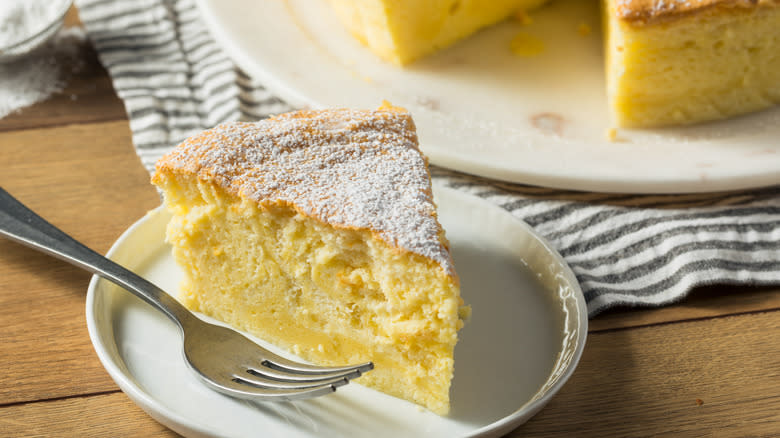
Depending on where you are, a generic cheesecake might be light as a feather or dense as fudge. The most notable example of a fluffy variation is Japanese cheesecake, which is like a fluffy cloud of sweet, creamy heaven. It was developed by chef Tomotaro Kuzuno in the 1960s after a trip to Germany inspired him to make his own decadent, soft cheese dessert. While in Berlin, he sampled the German cheesecake known as Käsekuchen, which uses quark instead of cream cheese for a lighter, tangy filling.
Kuzuno's version, which is also known as cotton cheesecake and souffle cheesecake, achieves its ethereal texture by whipping the egg whites until they are cloud-like and baking the crustless cakes in a water bath at a low temperature to treat the fragile structures with the utmost delicacy. The results are airy, lightly sweet, and tangy with cream cheese, and were so popular that they spawned an international chain of specialty shops in the 1990s called Uncle Tetsu's Cheesecakes.
Another airy version of the dessert is Italian cheesecake, which uses ricotta to achieve its fluffy texture. Like Japanese cheesecake, it is crustless, adding to its overall lightness.
New York-Style Cheesecake Is Dense
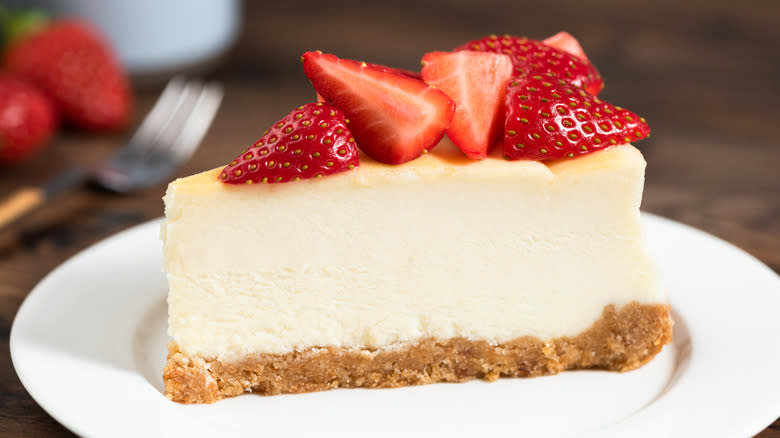
New York-style cheesecake is anything but airy. Chefs take great pains to make it as rich and dense as possible, and it's easy to see why. It's indulgent, cheesy, and custardy in perfect measure, and when done correctly, isn't rubbery. The reason for this irresistible texture is the balance of ingredients. Where other cheesecakes gain their creaminess and sturdiness through whipped cream, New York-style cheesecake relies on cream cheese and eggs. Some recipes include a little whipped cream, but it's more effective to use sour cream or crème fraîche instead, as these ingredients increase the denseness rather than whipping in air.
Another way this dense texture is achieved is by cooling the cheesecake slowly. The best way to regulate this cooling process is by turning off the oven and leaving the cake inside. This allows it to slowly deflate instead of collapsing from a sudden temperature change. It also prevents the cheesecake from cracking. Creating a dense structure is challenging, but it's one of the factors that makes New York-style cheesecake so distinctive and beloved.
Regular Cheesecake Can Use Various Cheeses
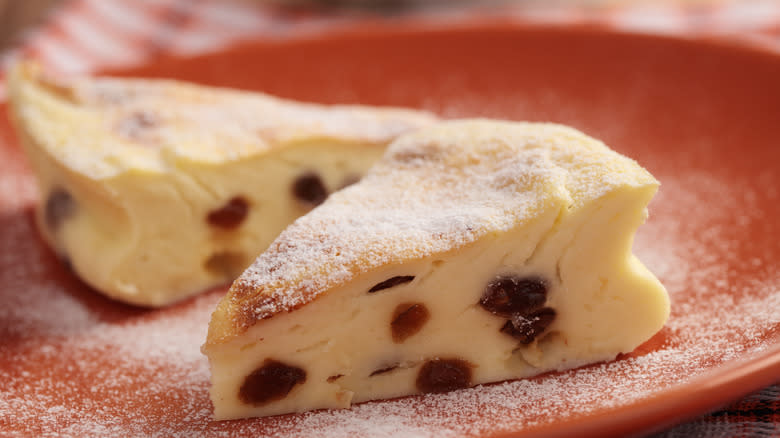
Cream cheese wasn't invented until the late 19th century, meaning that cheesecake was made with other base ingredients for nearly 2,000 years. Although it's uncertain what the ancient Greeks were using, recipes for the dessert in the Middle Ages and beyond called for fresh curd cheeses. Ricotta, for example, which forms the basis of Italian cheesecake, is made from leftover whey in the cheesemaking process. Similarly, cottage cheese is made from the curds of pasteurized milk, and quark is made by curdling soured milk. Because these cheeses have a lower fat content than cream cheese, they produce lighter cheesecakes.
Aside from Italian ricotta cheesecake, the German Käsekuchen, which uses quark as its main ingredient, is a prime example of a beloved version of the dessert that does not use cream cheese. In Poland, twaróg is the cheese of choice. Rather than being creamy like quark, it's firm and can even be sliced or crumbled like feta. It is the key ingredient in the Polish cheesecake sernik and lends a distinctive tangy flavor.
New York-Style Cheesecake Uses Cream Cheese
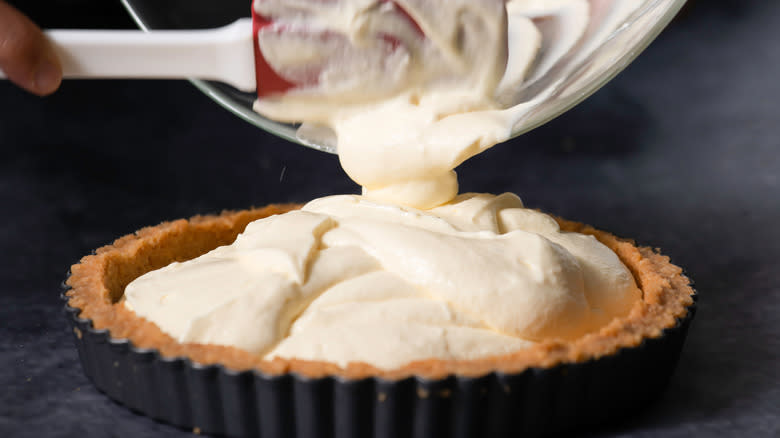
As a late-comer to the category, New York-style cheesecake could take advantage of the recent invention of cream cheese. The precise origin story of cream cheese is foggy. Some believe it was a happy accident when a New York dairy farmer tried to replicate the soft French cheese Neufchâtel in 1872, while others believe it was a deliberate innovation when a grocery store asked the owner of a New York Neufchâtel factory to create a creamier version of the cheese in 1875.
Regardless of whether it was accidental or a long time in the making, cream cheese was a game-changing ingredient for cheesecake. Unlike other fresh cheeses like ricotta and quark, it's made with cream, making it much richer than its milk-based counterparts. And although cream cheese is often compared to Neufchâtel, the French cheese is usually aged for a few weeks, and is made with milk, making it sharper tasting and lighter. Swapping ricotta or Neufchâtel with cream cheese instantly makes cheesecake creamier, and it was one of the main innovations that made New York-style cheesecake rocket to the top of the cheesecake rankings as far as Americans were concerned. To maximize the impact of this crucial ingredient, many recipes instruct bakers to only use full fat cream cheese, demonstrating just how pivotal that extra fat percentage is when it comes to flavor and texture.
There Are Many Types Of Regular Cheesecake
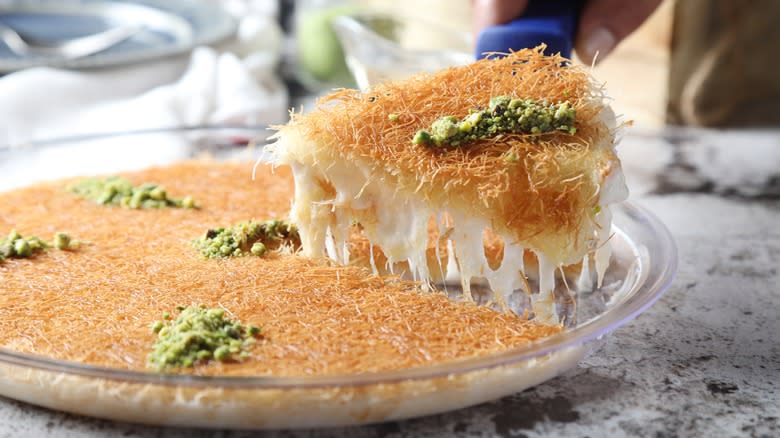
Cheesecake is a broad category with plenty of room for innovation. There's the feather-light Japanese cheesecake and the caramelized Basque cheesecake. There's the quark-based Käsekuchen and the twaróg-based sernik. There are the no-bake cheesecakes and the ones baked in water baths. They come in all shapes and sizes and can be topped with anything from fresh fruit to Kinder chocolate. They can be airy and dense, sickly sweet, or hardly sweet at all. What binds the category together is a creamy, soft cheese filling.
Some recipes that fall under this umbrella are unfamiliar to many American diners. Knafeh, for example, is a Middle Eastern dessert made with a type of shredded phyllo pastry called kataifi, which is layered on top of a soft, cheesy filling. In Sweden, ostkaka is the cheesecake of choice, made from a mixture of homemade cheese curds, eggs, flour, cream, and almonds. It is crustless and has a lumpier, cheesier texture than many other kinds of cheesecake.
Added to these specific variations is an endless array of flavors and additions. From pumpkin cheesecake to jello cheesecake, the dessert continues to be adapted and expanded nearly 2,000 years after the Greeks began serving it.
New York-Style Cheesecake Has A Specific Formula
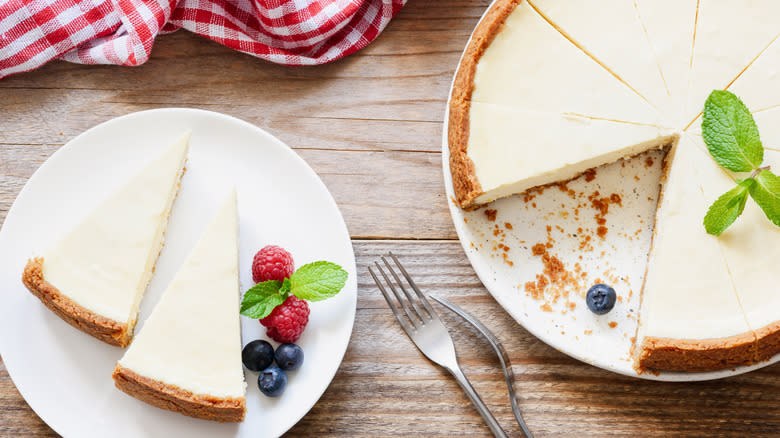
New York-style cheesecake could not be more different in its variability than regular cheesecake. Add a handful of strawberries to the filling or switch the graham crackers with Oreos, and you've got a different dessert entirely. For a cheesecake to fall into this narrow category, it needs to have a graham cracker crust and a sweet filling with eggs and vanilla that revolves around full-fat cream cheese. Most New York-style cheesecakes also incorporate lemon juice, and some add starch such as flour or cornstarch to provide stability.
Despite these constraints, there is some wiggle room. You can use sour cream or whipped cream in the filling alongside the cream cheese; you can use orange zest instead of lemon zest (the pastry chef at Lindy's reportedly used both, according to a New York Times investigation); and you can either bake it at a very low temperature on its own or at a slightly higher temperature in a water bath. Ultimately, however, these variations only exist to perfect the recipe rather than alter it. New York-style cheesecake has stood the test of time because, like tiramisu and Caesar salad, its ingredients create something greater than the sum of their parts.
Price Differences Between Cheesecakes
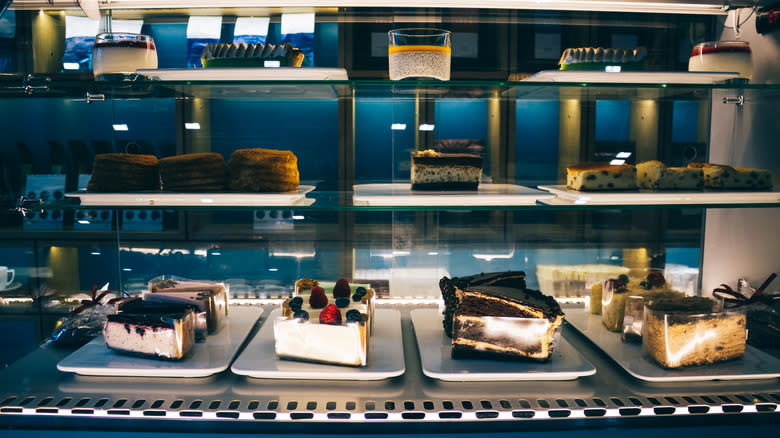
If you walk into your nearest supermarket, it's likely that the New York-style cheesecakes and regular cheesecakes will be roughly the same price. At Walmart, for example, a 16-ounce New York-style cheesecake and a 16-ounce strawberry cheesecake are each $5.98 as of this writing. If you're looking for a less common type of cheesecake, however, you may have to purchase it from a higher-end bakery and spend a little more money.
When purchasing ingredients to make a cheesecake at home, there is similar variability, unless the calculus is whether to buy a specialty cheesecake or make one. Making a Basque cheesecake yourself instead of buying one from a pricey bakery, for example, will save you money since the ingredients (eggs, cream cheese, sugar, vanilla, and cream) are inexpensive. Cheesecake flavors vary widely, which you will need to take into consideration if you're trying to spend as little money on ingredients as possible. Overall, New York-style cheesecake is one of the cheaper options because of its simplicity. The cost of eggs, cream cheese, and vanilla add up, but they appear in many cheesecake recipes. Making a cheesecake with an elaborate filling, be it pumpkin spice or caramel apple streusel, requires more ingredients and therefore leads to a higher sticker price.
Read the original article on Mashed.

